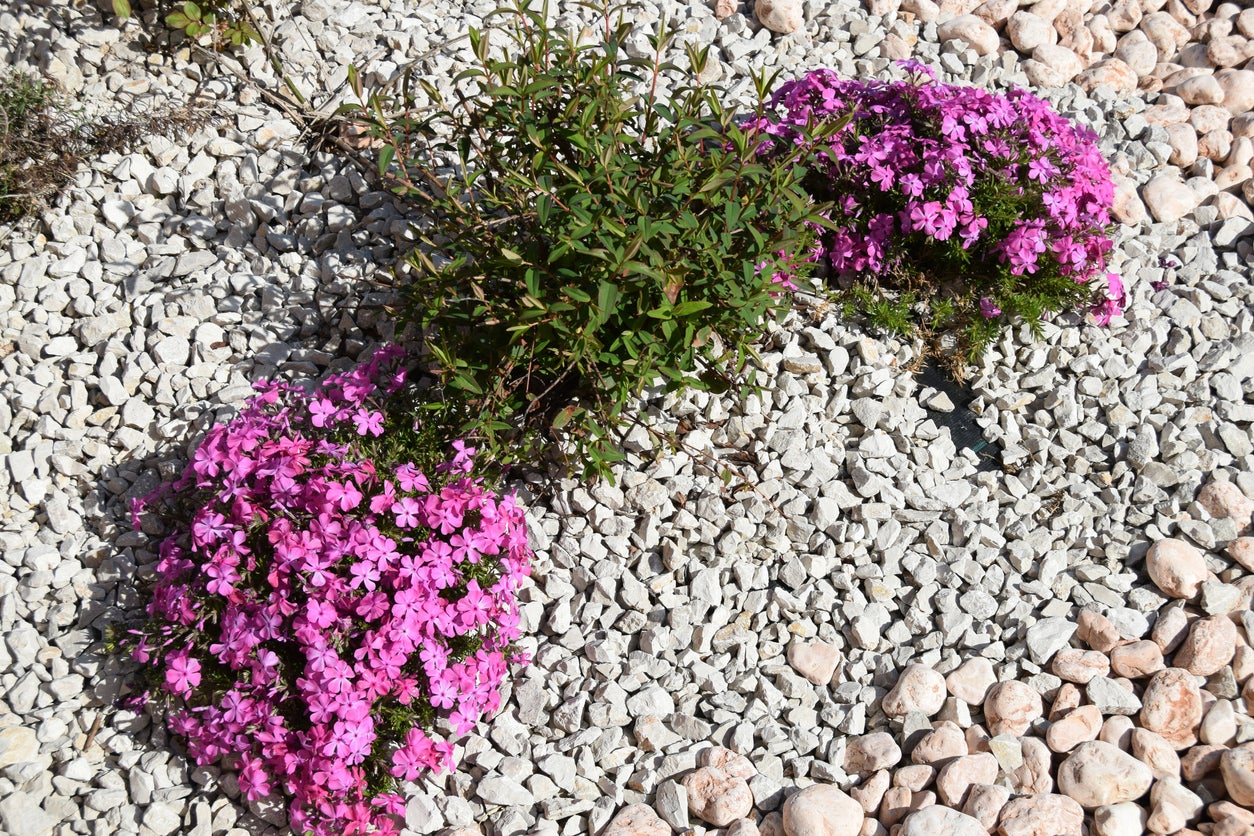Gravel Bed Garden Design: Tips On Laying A Gravel Garden


There are many useful mulches to use on the garden bed. Some help retain moisture, as does the gravel garden bed. Gravel beds are something you won’t see in every garden, but they can provide something different in your landscape. Read more to see if laying a gravel garden is an option for you.
Gravel Bed Garden Design
Your gravel bed can be any shape and as large or small as you need. The secret to beautiful plants growing in the gravel bed is plant choice and soil preparation. Drought resistant plants are perfect for this type of bed. Once the gravel top cover is in place, you likely won’t disturb it.
Use a border. This helps define the area and keeps the gravel in place. Bury a metal garden strip around the edges, leaving half an inch (1 cm.) above ground to hold the rock. Or use a wider border made with garden pavers.
How to Install a Gravel Garden
Pick the spot for your gravel garden bed. Remove all grass, weeds, and existing plants. Till the soil well, at least 5 to 6 inches (13-15 cm.) deep. Mix in well-finished compost. If soil is clay or drainage is poor, compost will help improve it. You may also add coarse sand for a grittier mix and to help with drainage. Once the gravel mulch is in place, it’s difficult to enrich your soil. You can sprinkle dry fertilizer or use a liquid mix, but it is prudent to keep most plants growing in rich soil.
Level the soil with a rake. Add the border when soil is finished. As mentioned above, you can install a metal garden strip or use pavers for the border. This keeps the covering in place.
Choose plants appropriate to your garden spot and your area. Ornamental grasses, herbaceous perennials, and even trees or shrubs may be suitable. Install plants into the soil.
Add any hardscape features such as benches, water features, clay pots, or tin planters. Large boulders complement the gravel garden construction. Upcycle items for planters, keeping in mind that less is often more.
Sign up for the Gardening Know How newsletter today and receive a free copy of our e-book "How to Grow Delicious Tomatoes".
Choose medium size gravel to cover the bed. You may include patterns by using colored slate chippings. Add a pathway, if desired, using larger stones or pavers.
Use a hand spade to carefully spread gravel around your new plantings. Use a rake for other parts of the larger bed, leveling the rock throughout. Save some of the gravel for later in case it is needed to fill in as the new bed settles.

Becca Badgett was a regular contributor to Gardening Know How for ten years. Co-author of the book How to Grow an EMERGENCY Garden, Becca specializes in succulent and cactus gardening.